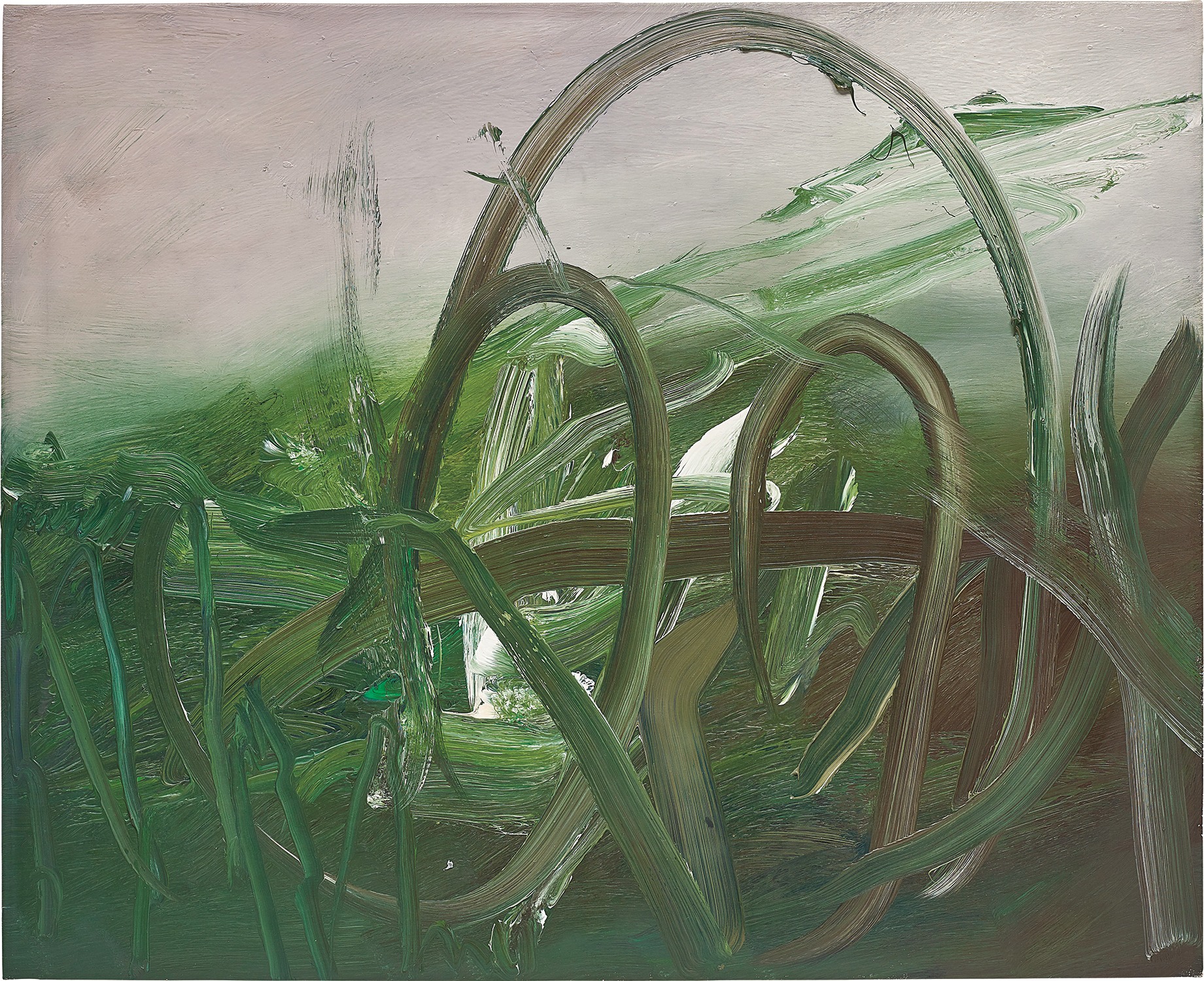

11Ο
Gerhard Richter
Busch (Scrub)
Full-Cataloguing
Having taken his first steps towards abstraction in 1961-62, following his move from East to West Germany, Richter’s painterly style shifted radically from Social Realism and towards photo realistic painting. Stimulated by the debates of his fellow Capitalist Realist artist’s, Sigmar Polke, Konrad Lueg (later Konrad Fischer), Manfred Kuttner and Joseph Beuys, Richter wanted to ‘start from scratch’ (Gerhard Richter, quoted in Michael Kimmelman, ‘Gerhard Richter: An Artist Beyond Isms’, New York Times Magazine, 27 January 2002, p. 44) and destroyed almost all his work in a bonfire in the courtyard of the Kunstakademie Düsseldorf.
Anticipating his later abstract paintings such as the present work, in 1962 Richter painted his seminal canvas, Tisch (Harvard Art Museum, Boston), which he later placed first in his catalogue raisonné, despite the fact that this was chronologically inaccurate. A key stone to his abstract experimentations, Tisch was painted after an image of an Italian table from Domus magazine. Unhappy with his representation, the artist re-worked the canvas and dissolved the motif in an expressive swirl of colour, allowing the figurative ground and abstract gesture to collide. Demonstrating a shift in Richter’s abstract practice, the present work from 1985, allows the films of paint to become more visible. In the 1980s he began to build up rich layers of gestural and skilfully applied colour, obliterating the illusionistic underpainting evident in his earlier abstract work the artist allows the surface to come alive with artistic resonance.
Identifying abstraction as his ultimate artistic goal, in his notes from 1964-65 Richter elucidates ‘all that interests me is the grey areas, the passages and tonal sequences, the pictorial spaces, overlaps and interlockings. If I had any way of abandoning the object as the bearer of this structure, I would immediately start painting abstracts’ (Gerhard Richter, quoted in Gerhard Richter: Text : Writings, Interviews and Letters, 1961-2007, New York, 2009, p. 34). Regarding his earlier photo paintings as a temporary solution, in 1965 the artist began honing in on details, for example the curtains in the background of his painted photographic portraits in Vorhang III (hell), 1965 (Neue Nationalgalerie, Berlin). Isolating abstract details and allowing his works to become more gestural, such as Parkstück, 1971 (Museum Moderner Kunst, Vienna), he allowed the abstraction to become his painterly motif.
Representing Richter’s fundamental scepticism toward political dogma, Busch, envelops the onlooker into an autumnal tempest amidst the artist’s technically astute painterly investigations. Bridging the formal distinctions between abstraction and figuration, in Busch a seemingly abstract surface, brought to life through layers of impastoed green paint, is ascribed a naturalistic reading through the artist’s choice of title, translating to 'Scrub'. Reflecting on the synthesis between abstract and realist painting, the artist notes: ‘Experience has proved that there is no difference between a so-called realist painting – of a landscape for example – and an abstract painting. They both have more or less the same effect on the observer’ (Gerhard Richter, quoted in 'Gerhard Richter and Irmeline Lebeer, Gerhard Richter ou La réalité de l’image' in Chroniques de l’art vivant, February, 1972). Solemn contrasts of green and violet instil the composition with the atmospheric palette of the Northern Renaissance masters, evoking the sombre glory and naturalistic hues of Albrecht Dürer, Albrecht Altdorfer and Mathias Grünewald. Resonating with northern light, the palpable strokes of colour alternate between the heavy darkness and crystalline brightness of Northern Europe.
Drawn to chance procedures and the randomness of gesture, Richter’s abstract compositions exemplify the power of his artistic legacy and his ultimate command of the painterly medium. Borrowing John Cage’s anarchic epithet, Richter stated, ‘I had nothing to say and was saying it’ (Marthe Lisson, ‘Gehard Richter’, ShirnMag, 15 September 2014). Richter’s technically astute mastery of the painterly medium, paired with the hues and calibrated tones of his Abstract works, have rooted Gerhard Richter as one of the finest colourists of the twentieth century.
Gerhard Richter
German | 1932Powerhouse painter Gerhard Richter has been a key player in defining the formal and ideological agenda for painting in contemporary art. His instantaneously recognizable canvases literally and figuratively blur the lines of representation and abstraction. Uninterested in classification, Richter skates between unorthodoxy and realism, much to the delight of institutions and the market alike.
Richter's color palette of potent hues is all substance and "no style," in the artist's own words. From career start in 1962, Richter developed both his photorealist and abstracted languages side-by-side, producing voraciously and evolving his artistic style in short intervals. Richter's illusory paintings find themselves on the walls of the world's most revered museums—for instance, London’s Tate Modern displays the Cage (1) – (6), 2006 paintings that were named after experimental composer John Cage and that inspired the balletic 'Rambert Event' hosted by Phillips Berkeley Square in 2016.